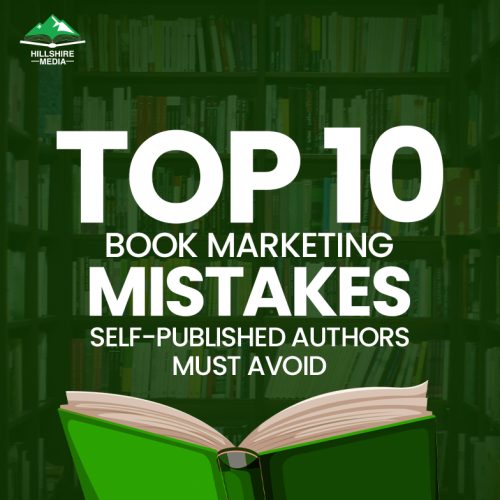Publishing a book has never been more achievable, but for first-time authors, the book publishing process in 2025 can feel overwhelming. With so many options—traditional publishing vs self-publishing, hybrid models, and online platforms—deciding the best path can be confusing. Add in the costs of editing, cover design, and marketing, and many writers feel stuck before they even begin.
The truth is, getting your book published doesn’t have to be complicated or expensive. With a clear plan and the right resources, you can move from manuscript to marketplace confidently, without draining your budget. Whether you’re an aspiring novelist, a business professional writing your first book, or a memoirist sharing your story, this guide will walk you through the book publishing process in 2025, step by step.
Step-by-Step Guide to Getting Published
1. Finish Your Manuscript
Before thinking about publishers or marketing, focus on completing your manuscript. A finished draft—even if imperfect—is your ticket into the publishing world.
- Schedule daily or weekly writing sessions to stay consistent.
- Avoid editing as you write; finish the first draft first.
- Afterward, self-edit carefully and consider manuscript editing services for professional polishing.
A polished manuscript is your foundation for any publishing path. Even if you plan to submit to publishing companies for new authors, they will expect a completed, well-edited manuscript unless you are already established.
2. Choose Your Publishing Model
In 2025, authors have three primary publishing options:
- Traditional Publishing
- Submit your manuscript to literary agents or publishing companies for new authors.Pros: Industry credibility, professional editing and marketing, no upfront cost.
- Cons: Competitive, slower process, and lower royalties.
- Self-Publishing
- Retain complete control over production, distribution, and marketing.
- Pros: High royalties, creative freedom, fast release.
- Cons: You handle editing, design, and promotion yourself.
- Hybrid Publishers
- Combine elements of traditional and self-publishing. Authors share costs but receive professional guidance.
- Pros: Faster than traditional, maintains quality, and provides support.
- Cons: Some upfront investment required.
When considering traditional publishing vs self-publishing, think about your goals. If you want wide bookstore distribution and literary recognition, traditional is best. If you prioritize control, higher earnings, and speed, self-publishing or hybrid publishers may suit you better.
3. Edit and Format Professionally
Even on a tight budget, editing is non-negotiable. Readers will abandon a poorly edited book quickly, and negative reviews hurt credibility.
- Hire a freelance editor or use manuscript editing services for copyediting and developmental feedback.
- Use platforms like Reedsy, Upwork, or Fiverr to find cost-effective professionals.
- For formatting, tools like Vellum, Atticus, or Kindle Create prepare your manuscript for print and eBook platforms.
Professional editing and formatting ensure your book is both polished and market-ready.
4. Design a Professional Book Cover
Your book cover is your first marketing tool. Even a brilliant manuscript may go unnoticed with a weak cover.
- Hire a designer through Fiverr, 99designs, or Reedsy.
- Study trending covers in your genre for inspiration.
- If designing yourself, Canva Pro templates can help you create a professional look.
A professional cover not only attracts attention but also signals quality, an essential step in the book publishing process.
5. Distribute and Promote Your Book
Publishing is only half the journey; visibility drives success.
- Distribute widely: Amazon KDP offers global reach for print and eBooks. Hybrid publishers often use IngramSpark to access bookstores and libraries.
- Leverage free promotion: Create an author website, use social media, and join online author communities.
- Seek early reviews: Send advance review copies to beta readers, bloggers, or book clubs.
Even small, consistent marketing efforts can significantly improve sales and visibility.
Book Marketing Strategies for 2025
Even the best books need strong promotion. Here are effective strategies for first-time authors:
- Amazon SEO – Include relevant keywords in your title, subtitle, and description.
- Social Media Campaigns – TikTok (BookTok), Instagram Reels, and LinkedIn posts work well for different audiences.
- Email Marketing – Build a newsletter to keep readers engaged between releases.
- Virtual Book Tours – Partner with bloggers, YouTubers, and podcast hosts to reach new audiences.
- Paid Ads – Small, well-targeted campaigns on Amazon or Facebook can boost visibility.
What Makes a Publisher the Best for You?
The “best” publisher depends on your genre, goals, and budget. Look for these traits:
- Transparent Contracts – Avoid hidden fees or vague terms.
- High Royalty Rates – Self-publishing offers 60–70%, while traditional averages 10–15%.
- Marketing Support – Essential for publishing companies for new authors with limited experience.
- Wide Distribution – Ensure access to Amazon, bookstores, and libraries.
- Positive Reputation – Research reviews and avoid vanity presses.
Speaking with authors who have worked with the publisher can provide valuable insight.
Affordable Publishing Without Compromising Quality
If cost is a concern, these platforms offer budget-friendly options:
- Amazon KDP – Free publishing, print-on-demand, and global reach.
- Draft2Digital – Distributes eBooks to multiple retailers effortlessly.
- IngramSpark – Ideal for library and bookstore distribution.
- Lulu – Great for hardcovers or special editions.
Choosing hybrid publishers can also provide professional support at a lower cost than full-service packages, making the book publishing process smoother.
Final Tips for Publishing Success
- Prioritize editing and cover design—they directly influence sales.
- Don’t rush the book publishing process; a polished book lasts longer.
- Build your author brand early through social media or newsletters.
- Treat your book like a professional product, not just a personal project.
If you’re ready to publish but feel overwhelmed, publishing companies for new authors or hybrid publishers can guide you from manuscript to marketplace.
Need help publishing your book in 2025? Our expert team simplifies the process and ensures your work reaches readers worldwide.
FAQ
1. How much does it cost to publish a book?
Self-publishing can cost $300–$3,000, depending on editing, cover design, and marketing.
2. Should I self-publish or go traditional?
It depends on your goals. Traditional publishing vs self-publishing boils down to speed and control versus credibility and support.
3. How long does the publishing process take?
Self-publishing can take 1–3 months, while traditional paths can take 12–24 months.
4. Can I publish my book internationally?
Yes! Platforms like Amazon KDP and IngramSpark offer worldwide distribution.



